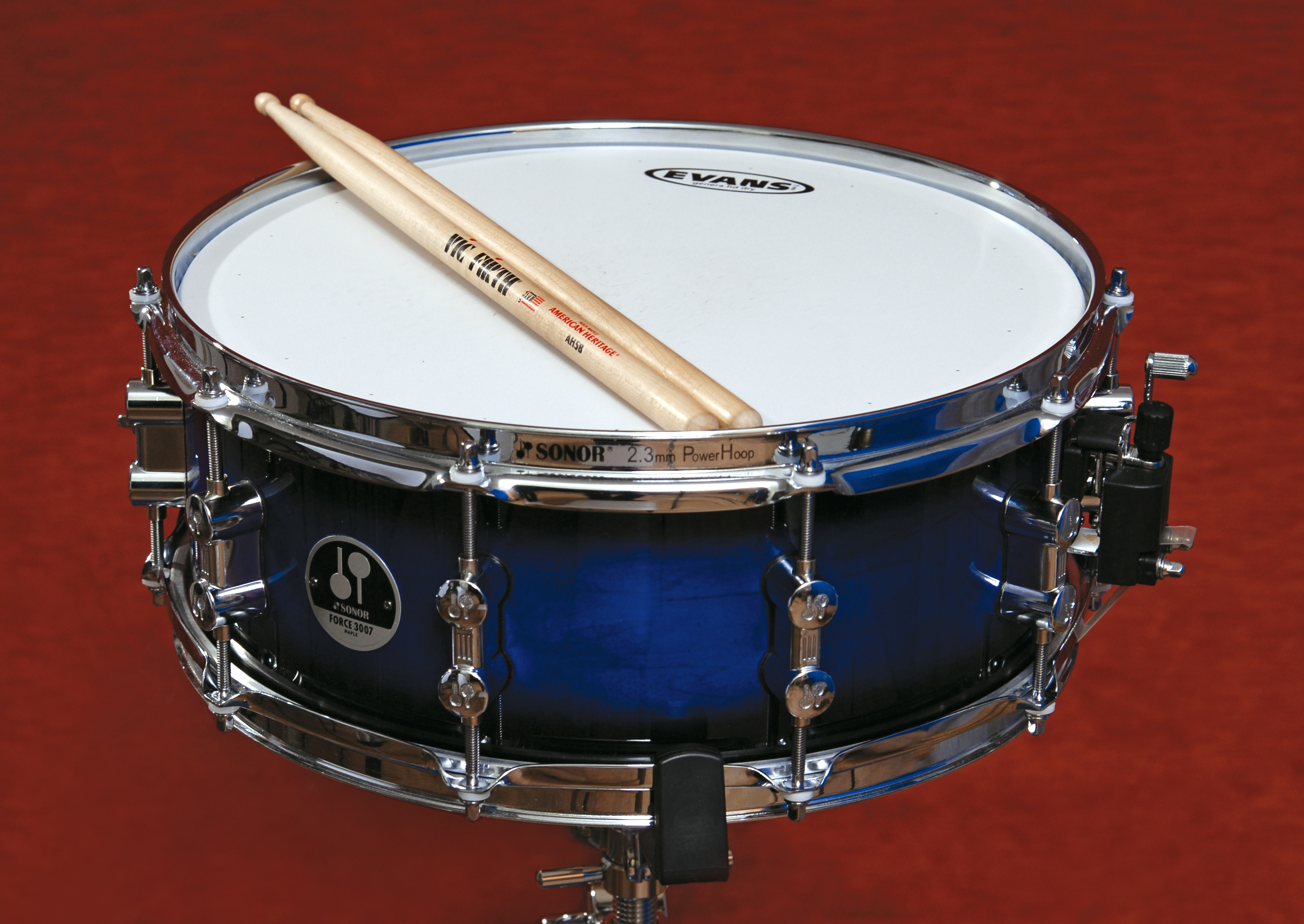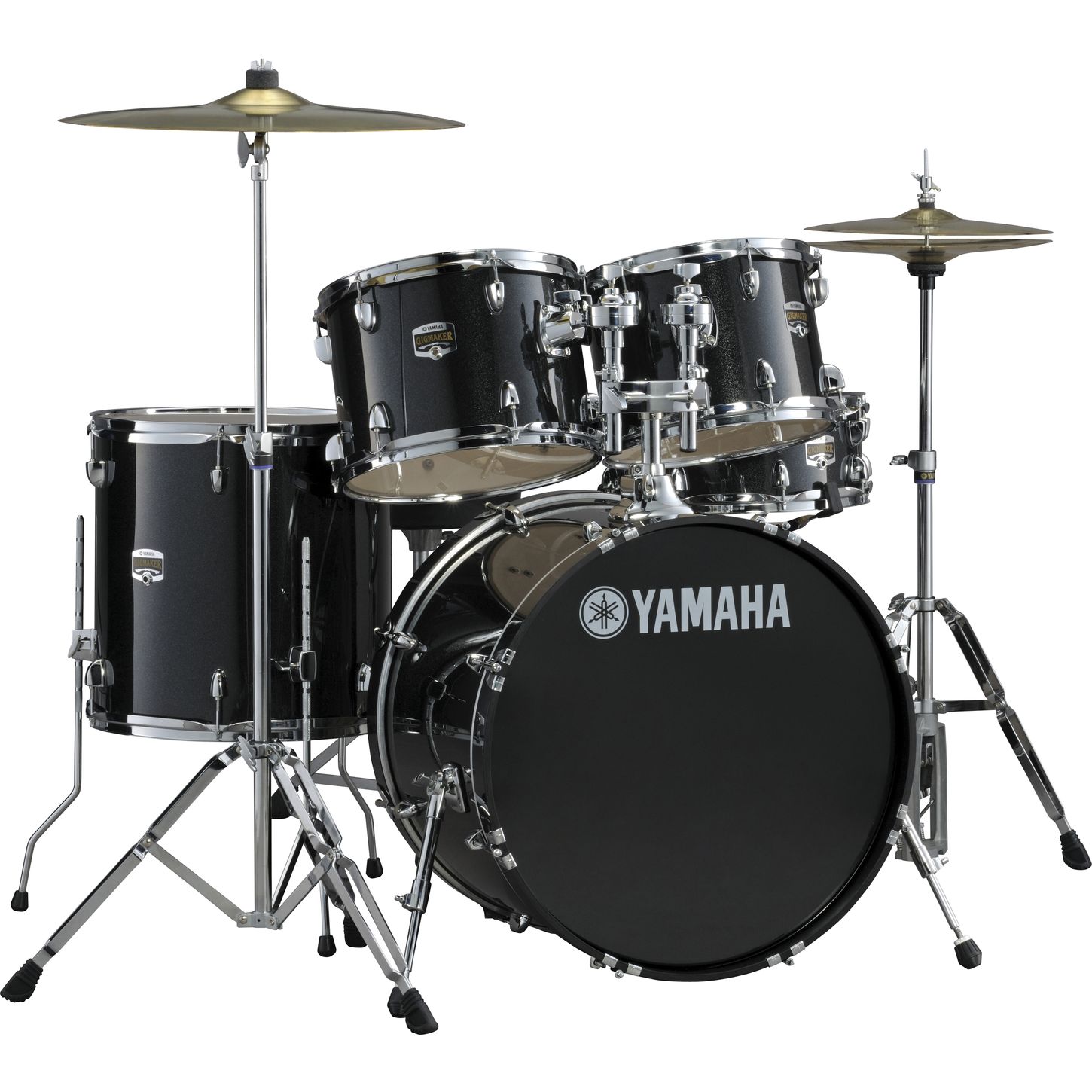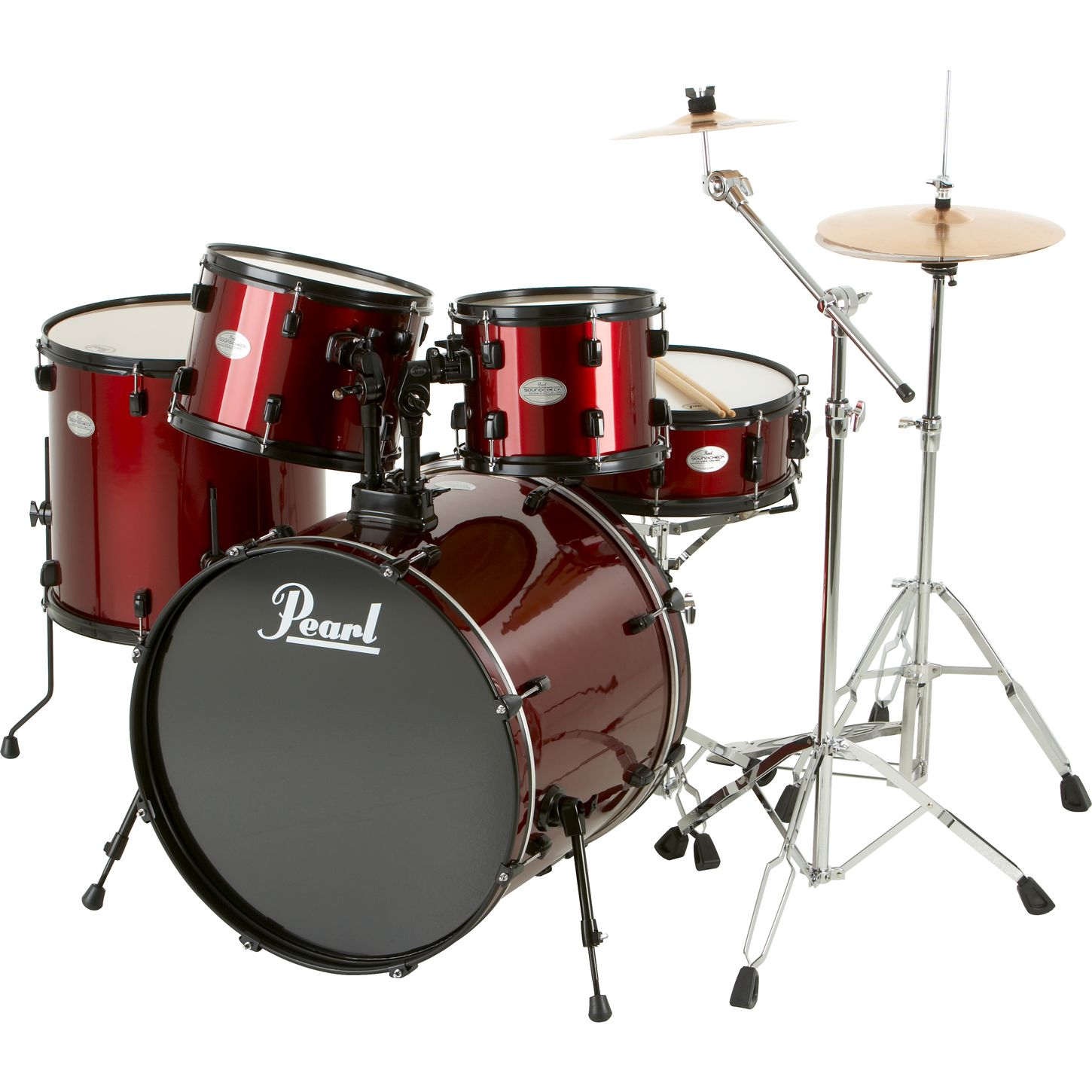 The drum is a known person in the percussion band of musical musical instruments. Inside the Hornbostel-Sachs classification system, this is a membranophone.[1] Drums consist of at least one membrane, called a drum or drumhead skin area, that is extended on the shell and struck, either immediately with the player's hands, or with a drum stay, to produce sound. There's a resonance head on the underside of the drum usually, typically tuned to a slightly lower pitch than the very best drumhead. Other techniques have been used to cause drums to make sound, including the thumb roll. Drums are the world's oldest and most ubiquitous musical tools, and the basic design has remained unchanged for thousands of years virtually.[1]Drums may independently be played out, with the gamer using a single drum, and some drums like the djembe are almost played in this way always. Others are normally played in a couple of two or more, all played by the main one player, such as bongo drums and timpani. A variety of drums with cymbals form the basic modern drum equipment together.
The drum is a known person in the percussion band of musical musical instruments. Inside the Hornbostel-Sachs classification system, this is a membranophone.[1] Drums consist of at least one membrane, called a drum or drumhead skin area, that is extended on the shell and struck, either immediately with the player's hands, or with a drum stay, to produce sound. There's a resonance head on the underside of the drum usually, typically tuned to a slightly lower pitch than the very best drumhead. Other techniques have been used to cause drums to make sound, including the thumb roll. Drums are the world's oldest and most ubiquitous musical tools, and the basic design has remained unchanged for thousands of years virtually.[1]Drums may independently be played out, with the gamer using a single drum, and some drums like the djembe are almost played in this way always. Others are normally played in a couple of two or more, all played by the main one player, such as bongo drums and timpani. A variety of drums with cymbals form the basic modern drum equipment together.Custom Drums : A Custom Drum Company Custom Drums by MapleWorks Drum
 Drums are usually performed by striking with the palm, or with a couple of sticks. In lots of traditional civilizations, drums have a symbolic function and are being used in religious ceremonies. Drums are being used in music remedy often, especially hand drums, for their tactile mother nature and easy use by a wide variety of people.[2]In popular music and jazz, "drums" usually refers to a drum set or a set of drums (with some cymbals), and "drummer" to the person who performs them.Drums purchased even divine status in places such as Burundi, where the karyenda was a symbol of the energy of the king.Construction[edit]Drum transported by John Unger, Company B, 40th Regiment NY Veteran Volunteer Infantry Mozart Regiment, 20 december, 1863The shell almost invariably has a circular beginning over that your drumhead is stretched, but the condition of the rest of the shell ranges widely. In the western musical tradition, the most normal shape is a cylinder, although timpani, for example, use bowl-shaped shells.[1] Other styles include a structure design (tar, Bodhr?n), truncated cones (bongo drums, Ashiko), goblet molded (djembe), and joined up with truncated cones (talking drum).Drums with cylindrical shells can be open at one end (as is the case with timbales), or can have two drum minds. Single-headed drums typically consist of a epidermis extended over a specific space, or higher one of the ends of a hollow vessel. Drums with two minds covering both ends of an cylindrical shell often have a small gap somewhat halfway between the two mind; the shell varieties a resonating chamber for the causing sound. Exceptions are the African slit drum, also called a log drum as it is manufactured out of a hollowed-out tree trunk, and the Caribbean metallic drum, created from a metal barrel. Drums with two minds can have a set of wiring also, called snares, organised across the bottom head, top brain, or both relative heads, hence the name snare drum.[1]
Drums are usually performed by striking with the palm, or with a couple of sticks. In lots of traditional civilizations, drums have a symbolic function and are being used in religious ceremonies. Drums are being used in music remedy often, especially hand drums, for their tactile mother nature and easy use by a wide variety of people.[2]In popular music and jazz, "drums" usually refers to a drum set or a set of drums (with some cymbals), and "drummer" to the person who performs them.Drums purchased even divine status in places such as Burundi, where the karyenda was a symbol of the energy of the king.Construction[edit]Drum transported by John Unger, Company B, 40th Regiment NY Veteran Volunteer Infantry Mozart Regiment, 20 december, 1863The shell almost invariably has a circular beginning over that your drumhead is stretched, but the condition of the rest of the shell ranges widely. In the western musical tradition, the most normal shape is a cylinder, although timpani, for example, use bowl-shaped shells.[1] Other styles include a structure design (tar, Bodhr?n), truncated cones (bongo drums, Ashiko), goblet molded (djembe), and joined up with truncated cones (talking drum).Drums with cylindrical shells can be open at one end (as is the case with timbales), or can have two drum minds. Single-headed drums typically consist of a epidermis extended over a specific space, or higher one of the ends of a hollow vessel. Drums with two minds covering both ends of an cylindrical shell often have a small gap somewhat halfway between the two mind; the shell varieties a resonating chamber for the causing sound. Exceptions are the African slit drum, also called a log drum as it is manufactured out of a hollowed-out tree trunk, and the Caribbean metallic drum, created from a metal barrel. Drums with two minds can have a set of wiring also, called snares, organised across the bottom head, top brain, or both relative heads, hence the name snare drum.[1]Gigmaker 5Piece Standard Drum Set with 22quot; Bass Drum Black Glitter
 On modern band and orchestral drums, the drumhead is located over the beginning of the drum, which is held onto the shell by way of a "counterhoop" (or "rim"), which is then organised by means of a number of tuning screws called "tension rods" that screw into lugs placed evenly about the circumference. The head's stress can be adjusted by loosening or tightening up the rods. Many such drums have six to ten pressure rods. The audio of your drum will depend on many variables--including condition, shell thickness and size, shell materials, counterhoop materials, drumhead materials, drumhead anxiety, drum position, location, and striking speed and angle.[1]
On modern band and orchestral drums, the drumhead is located over the beginning of the drum, which is held onto the shell by way of a "counterhoop" (or "rim"), which is then organised by means of a number of tuning screws called "tension rods" that screw into lugs placed evenly about the circumference. The head's stress can be adjusted by loosening or tightening up the rods. Many such drums have six to ten pressure rods. The audio of your drum will depend on many variables--including condition, shell thickness and size, shell materials, counterhoop materials, drumhead materials, drumhead anxiety, drum position, location, and striking speed and angle.[1]Pearl Soundcheck 5Piece Drum Set with Zildjian Cymbals Musician39;s
 Prior to the invention of pressure rods, drum skins were attached and tuned by rope systems--as on the Djembe--or pegs and ropes such as on Ewe Drums. Today these procedures are rarely used, though sometimes seem on regimental marching band snare drums.[1] The head of any talking drum, for example, can be temporarily tightened by squeezing the ropes that hook up the top and bottom heads. Similarly, the tabla is tuned by hammering a disc held in place across the drum by ropes stretching from the very best to bottom head. Orchestral timpani can be tuned to precise pitches by using a foot pedal quickly.Sound of an drum[edit]Several North american Indian-style drums for sale at the Country wide Museum of the North american Indian.Several factors determine the sound a drum produces, including the type, shape and construction of the drum shell, the sort of drum heads it has, and the strain of the drumheads. Different drum tones have different uses in music. Take, for example, the present day Tom-tom drum. A jazz drummer may want drums that are high pitched, resonant and silent whereas a rock and roll drummer may like drums that are noisy, dry and low-pitched. Since these drummers want different sounds, their drums in another way are designed just a little.The drum head has the most effect how a drum tones. Each type of drum head serves its own musical goal and has its unique audio. Double-ply drumheads dampen high rate of recurrence harmonics because they are heavier and they're suited to heavy taking part in.[3] Drum mind with a white, textured layer on them muffle the overtones of the drum mind slightly, creating a less diverse pitch. Drum minds with central magic or dark-colored dots tend to muffle the overtones even more. And drum minds with perimeter audio rings usually eliminate overtones (Howie 2005). Some jazz drummers avoid using thick drum mind, preferring solo ply drum heads or drum heads with no muffling
Prior to the invention of pressure rods, drum skins were attached and tuned by rope systems--as on the Djembe--or pegs and ropes such as on Ewe Drums. Today these procedures are rarely used, though sometimes seem on regimental marching band snare drums.[1] The head of any talking drum, for example, can be temporarily tightened by squeezing the ropes that hook up the top and bottom heads. Similarly, the tabla is tuned by hammering a disc held in place across the drum by ropes stretching from the very best to bottom head. Orchestral timpani can be tuned to precise pitches by using a foot pedal quickly.Sound of an drum[edit]Several North american Indian-style drums for sale at the Country wide Museum of the North american Indian.Several factors determine the sound a drum produces, including the type, shape and construction of the drum shell, the sort of drum heads it has, and the strain of the drumheads. Different drum tones have different uses in music. Take, for example, the present day Tom-tom drum. A jazz drummer may want drums that are high pitched, resonant and silent whereas a rock and roll drummer may like drums that are noisy, dry and low-pitched. Since these drummers want different sounds, their drums in another way are designed just a little.The drum head has the most effect how a drum tones. Each type of drum head serves its own musical goal and has its unique audio. Double-ply drumheads dampen high rate of recurrence harmonics because they are heavier and they're suited to heavy taking part in.[3] Drum mind with a white, textured layer on them muffle the overtones of the drum mind slightly, creating a less diverse pitch. Drum minds with central magic or dark-colored dots tend to muffle the overtones even more. And drum minds with perimeter audio rings usually eliminate overtones (Howie 2005). Some jazz drummers avoid using thick drum mind, preferring solo ply drum heads or drum heads with no mufflingPearl EPro Live Electronic/Acoustic Drum Kit Stefan Wyeth
 The second biggest factor that influences drum sound is head stress up against the shell. When the hoop is located around the drum shell and head and tightened down with tension rods, the tension of the head can be changed. When the strain is increased, the amplitude of the sound is reduced and the frequency is increased, making the pitch higher and the volume lower.
The second biggest factor that influences drum sound is head stress up against the shell. When the hoop is located around the drum shell and head and tightened down with tension rods, the tension of the head can be changed. When the strain is increased, the amplitude of the sound is reduced and the frequency is increased, making the pitch higher and the volume lower.
{ 0 comments... Views All / Send Comment! }
Post a Comment